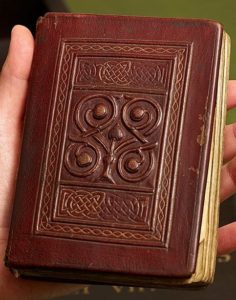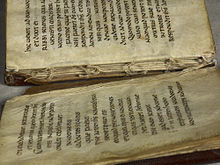I was thrilled to discover that one of the historical fiction authors I’d met on facebook, Annie Whitehead, lives very close to me – only a few miles as the crow flies. I couldn’t resist the chance to meet up and share our common experiences of writing, editing and reaching readers with our books.
Annie is one of the editors of the English Historical Fiction Authors blog. (You can find my latest post about Law and Order in the 17th century on the EHFA blog here.) I was also recently featured on Annie’s own blog arguing over who is the greatest figure of the seventeenth century, with two other authors in my period. We narrowly escaped blows, but you can read all about it here!
Whilst munching our way through excellent scones and jam, we shared our experiences of writing this most demanding of genres. Historical fiction is a broad church, but within it the demands of readers can be very particular. People who enjoy Roman fiction or WW2 fiction may not enjoy stories set in Medieval times. Tudor fans do not necessarily want to read Regency. So our readerships are small – much smaller than those of straightforward contemporary thrillers or mysteries or romances.
I know very little about the period that Annie is exploring, so I asked her to tell me more. To give me an idea of her books, I asked which two other historical novelists she would like her books to be to be shelved between.
So if we had a pair of bookends, Annie’s book would be sandwiched between…
To Be a Queen is the true story of Aethelflaed, the ‘Lady of the Mercians’, daughter of Alfred the Great. She was the only female leader of an Anglo-Saxon kingdom. It is the tale of one family, two kingdoms and a common enemy. Born into the royal house of Wessex at the height of the Viking wars, she is sent to her aunt in Mercia as a foster-child, only to return home when the Vikings overrun Mercia. In Wessex, she witnesses another Viking attack and this compounds her fear of the enemy. She falls in love with a Mercian lord but is heartbroken to be given as bride to the ruler of Mercia to seal the alliance between the two Anglo-Saxon kingdoms. She must learn to subjugate her feelings for her first love, overcome her indifference to her husband and win the hearts of the Mercians who despise her as a foreigner, twice making an attempt on her life. When her husband falls ill and is incapacitated, she has to learn to rule and lead an army in his stead and when he subsequently dies, she must fight to save her adopted Mercia from the Vikings and, ultimately, her own brother.
I asked Annie if there was one object she could show me to give an idea of the period, what would she choose?
My immediate thought was to pick something from the Sutton Hoo treasure, to show the skilled craftsmanship of the Anglo-Saxons. Their work with cut garnets and metal filigree is incredible, and modern jewellers have tried, and failed, to replicate it. But the item I’ve chosen is the Stonyhurst Gospel, sometimes known as the St Cuthbert Gospel. To many people, the Anglo-Saxon age is one of swords and savagery, of pagans and warriors and folks dressed in sacking fighting off marauding Vikings. The Stonyhurst Gospel, dating from around the 690s, shows not only the excellent craftsmanship, but also that even as far back as the seventh century the ‘English’ were learned – not all of them, true, but the same can be said of any age – and were literate. Christianity came relatively early, and this book speaks volumes (pardon the pun) about Anglo-Saxon culture.
D: I’m glad you chose this, as I was lucky enough to visit Stonyhurst neasr Clitheroe last year and have a guided tour of their amazing collection of documents and books. Fabulous place; the collection will shortly be opened to the public so others can share the treasures of their archives.
If you could choose one person and go back in time to live as someone else, who would it be and why?
This is a tough question! There are so many people from history whose minds I would like to inhabit for a day: Charles II, for example, to find out if he really did convert to Catholicism, and what he was really thinking about his ministers and mistresses. The beds would certainly be a lot more comfy than the era I’ve decided to plump for. At first I wondered if I would like the pre-Conquest age. Smelly, dirty, uncomfortable, not to mention dangerous… but lately I’ve been observing that I can detect the change of season by the different smells brought on the breeze; I’d like to go back to a time when people were more in tune with the seasons, could tell the time without a clock, and rose with the dawn and slept in the dark. And in that time, who would I be? Somebody high-born, obviously, to get the best food and creature comforts! So can I please be my Lady Aethelflaed for a day, just to find out how close to the truth I got with my story?
It was lovely to share our writing processes, talk books, publishing and readers, and I’m sure coffee and scones will be on our agenda more often when we can claw time away from our computers. I’ve just downloaded Annie’s book so a review will be coming soon.
Visit Annie on her author Facebook page to discover more about her, and her other books.





Thanks for your company and the lovely chat about writing generally and historical fiction specifically. And the scones were great!
Managed to steer myself past their home-made cakes on the way out too!
So cool that you and Annie got to meet up:)